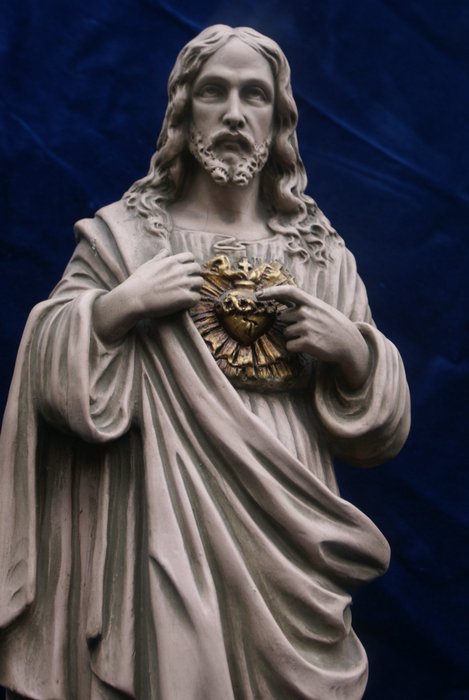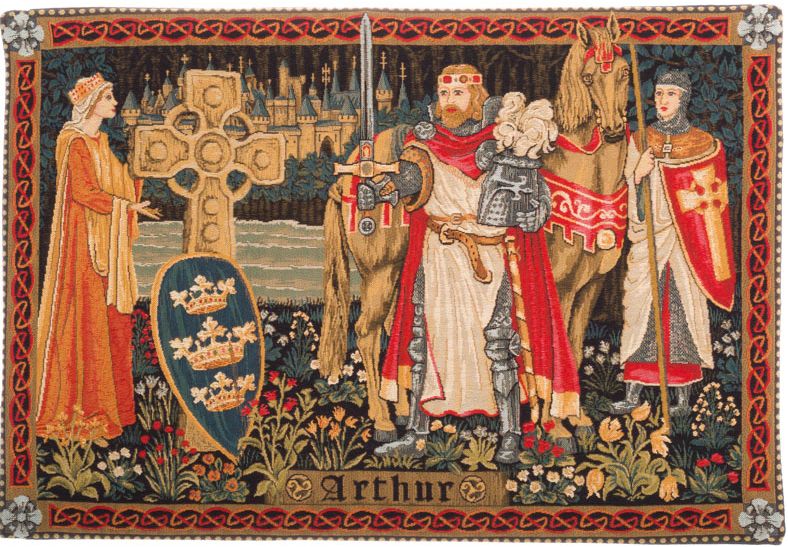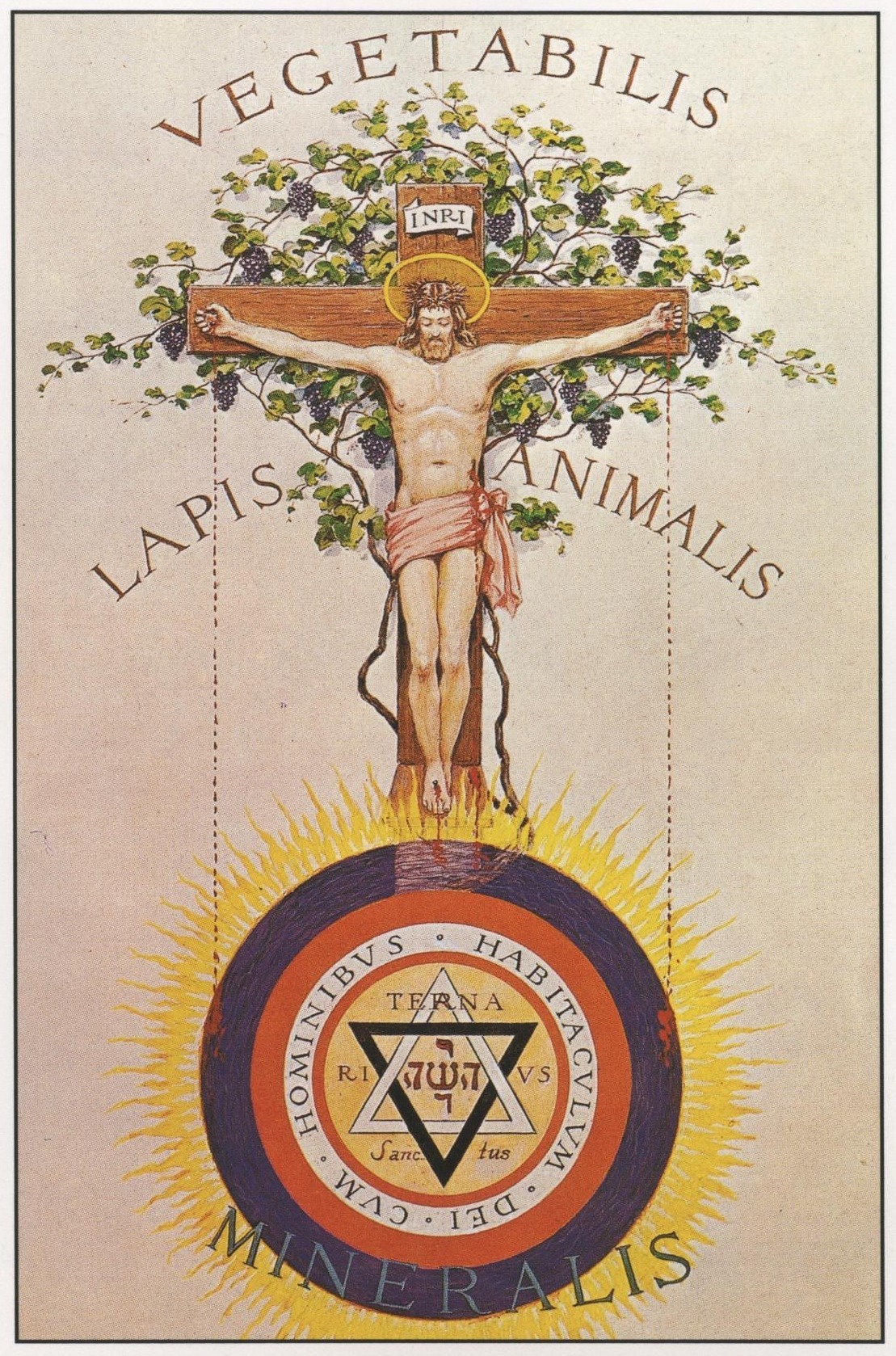I was on a quest with my master, together with another pupil. We were looking for a unique sample of blood, a rare blood-type. The master, without explaining why, took us to a city in Arkansas, of all places. He apparently had an idea of where this special blood could be found, but led us to an abandoned building. The master communicated with few words, if any at all. You could sense his thoughts and feelings through other means, say bodily gestures or simply intuition. For instance, when we arrived at the abandoned building I knew this was the place he intended to search, by some kind of telepathy.

As we navigated the long hallways of the dilapidated building, I tried to use my flashlight, which for some reason proved to be of little use. I checked my battery and noticed it was at half – which ought to be enough – yet it wasn’t illuminating anything, which didn’t make any sense. Eventually we reached a kind of lobby, and I wasn’t sure how the blood could have been preserved in such a derelict place.

Then, all of a sudden, and to my astonishment, the lights in the room came on, and we found ourselves not in an abandoned building, but a bustling school facility. We were confronted by a very-well kept, beautiful white woman in her mid-thirties; she had dark brown hair, and was wearing a deep-blue dress, light blue stockings, her hair done up in some intricate way, that’s all I can remember. She told us she was the administrator of this school, and accused us of trespassing, and that we better explain ourselves. I had some sense of admiration for her; here was an incredible, capable woman running the affairs of this place. Wife material most definitely.

With little hesistancy, I decided I would do the talking. I don’t remember my exact reply, but I somehow diffused the tension with a simple admission of guilt in an unexpected, humorous manner. This caught her by surprise, and in the ensuing pause a group of students from outside the entrance of this wing came in. One of them looked at me, and gave a snide remark, “Caught trespassing, huh?” But I simply took it in my stride, taking off my cap as I said “Yes, lord”. Once again, the demure of my tone confused and conveyed a charming mischief that dispelled the intended intimidation. In a kind of resentment, the student gave me a menu, which I read. To my disappointment, it was an itemized list of McDonalds meals. This seemed to convey what the student thought I was worth, but then again, maybe it is what this chump had for lunch.

After that, the lady told us we had to leave. Once again, I managed to maintain a dignity of composure, and said “I bid you adieu” as I gestured goodbye. I decided to go out the way we came in, but neither my master nor the other pupil went with me. I don’t know what happened to them. This time, I could see the design of the school where before there was only the illusion of decay. The ridges and corners of the hallways were adorned with polished glass, stones, and jewels. Carvings of owls looked on at the corners of the ceiling. As I approached the entrance, I noticed a man was following me to make sure I didn’t try to weasel around.

Just before I exited the building, an animated statue of Jesus Christ Himself walked over to me. He said in a rather unexpected gravelly voice, “I can’t wait to see you again, you mean the world to me.” He gave the peace sign as he said this, perhaps to communicate he was a Prince of Peace, or perhaps because I was “peacing out”. I responded with the American sign-language for I love you, and said “Thank you Jesus. I love you too.”

I only made the connection about a week later that Christ is termed a “living stone” in 1 Peter 2: 4-5, and that Christ was an animated statue with a gravelly voice!
Another guard waited outside the entrance, presumably the one who should have been on duty when we snuck in (maybe they like to monitor would-be adventurers, to see what they do or know). I looked back at the entrance, and i’m no architect, but something like a portico or some prominent structure defined the entrance in the shape of a king’s crown, bedecked with jewels and precious stones. I asked the guard if I could take a pamphlet from this place, which I noticed were nearby. He told me to keep my distance, as I sighed and said how amazing this place is. He agreed, but didn’t relent in letting me have any memorabilia. I looked at the crown and saw there were letters, but for some reason I couldn’t read it, like it was in Latin or something. The guard told me it was called Trinity College, go figure.
So that’s that.
First of all, it is easy to connect the “unique blood type” with the blood of Jesus, as I recall a hymn that was sung in my formative years at church:
“What can wash away my sin?
Nothing but the blood of Jesus;
What can make me whole again?
Nothing but the blood of Jesus.
Oh! precious is the flow
That makes me white as snow;
No other fount I know,
Nothing but the blood of Jesus.”
And of course, there is the sacrament of the bread and the wine, the former symbolic of Christ’s flesh and the latter of his blood, as in John 6:
“He that eateth my flesh, and drinketh my blood, dwelleth in me, and I in him.”
Later on, in verse 63 Jesus says
“It is the spirit that quickeneth; the flesh profiteth nothing: the words that I speak unto you, they are spirit, and they are life.”
Which is to say – in connection with the scripture “man liveth not on bread alone, but on every word that comes from the mouth of the lord” – I would guess there isn’t much basis for believing in some physically divine aspect to Jesus’ blood, although the idea is that Christ was the “word made flesh” and incarnated as a material birth. Anyway, notwithstanding Jesus’ status of divine blood being purely spirit as if it were not related to any material importance, I am reminded of various legends that attribute a divine or semi-divine status to heroes or kings and their bloodline; as is attested in an excellent video by Survive the Jive:
In the icelandic king sagas there is an account of one great king who was worshipped after his death and was known as Olafr Geirstadaalr which means Olafr, the Elf of Geirstadr.
In the legendary sagas of Iceland, the elves are referred to along with the ancestors, and the ancestors are often seen as having sexual relations with elf women.
Another saga recounted by Survive the Jive tells how human kings presided over Elfland, since they had elven blood. They were said to be more beautiful than ordinary men.
Anyway, in the Völsunga saga, there’s the account of Sigurd drinking the blood of a dragon Fafnir and then hearing the language of birds, which is sometimes esoterically interpreted as being the language of the gods; we see something of this in the depiction of angels as winged – which beyond cherubim and seraphim is not biblical with respect to the Malakh or messengers, i.e. the common angel, but arguably a form of symbolic interpolation of one kind or another – , this notion that the air is intermediate between Heaven and Earth, and so celestial beings with wings communicate between the residents of either realm; as for instance, Hermes with his winged boots.
There appears to be a widespread belief in Paganism of animated spirits who communicate between mortals and the gods, one example of which is Apuleius’ treatise entitled On the God of Socrates, which explores the greco-roman idea of Daimons (the origin of the word ‘Demon”), enumerated in several classifications, as being familiar, tutelary spirits – guardian angels as it were – tied to the bloodline of the fathers or paterfamilias, even presiding over of a tribe, clan, city, culture, even a specific person; these and/or other kinds of aerial spirits communicate via dreams, divination, “signs”, and Apulieus connects them to the word and idea “genius” of a tribe, clan, city, place, and/or people.
In anglo-saxon tradition, there is a Night of the Mothers, which venerates ancestral matrons, so there can be a different emphasis depending on what ethnicity, race, culture, tribe yada-yada; in general there is apparently, a relationship between the spirits of the dead, in a graduated hierarchy of important ancestors as heroes, and lesser spirits – perhaps of another class than ancestors – who intermediate between the gods, all connected to the seasonal wheel of the year as the celestial influences mediate in various modes to the earth. I’m beginning to lose myself, let’s continue.

Something interesting here is the idea of King Arthur as being related to the fairies. The Arthurian cycle has varied wildly throughout history, but Walter Yeeling Evans-Wentz discusses the fairy link in his book – which was derived from a previous doctor-of-letters thesis – The Fairy Faith in Celtic Countries. Just as a cursory glance, he discusses Arthur’s half-sister Morgan le Fay, which Fay means Fairy. I found most of Wentz’s arguments either difficult to verify – I couldn’t locate the specific part in his source for the connection between Uther and the underworld – or too thin. Morgan le Fay has consolidated other roles and characters in the common renditions of today, but the significance of his relationship to Morgana is titillating in connection to the half-sister incestuous affair and offspring thread; as if to suggest the magic bloodline comes from their common parent, Igraine. Again, it does depend on which source and other possibilities. Geoffrey of Monmouth, one of the seminal and foremost texts in terms of historical chronology, does not have much of what we associate with Arthur today, for instance.

Moreover, Arthur’s birth is in some variants obfuscated and involves magical interference from Merlin. He is taken away from his parents and delivered to Sir Ector; the truth of his kingly bloodline is only revealed later when he removes the sword from the stone. The “divine right of kings” expresses the idea of an anointed authority standing in for God as an appointed representative, just as Christ intercedes and reconciles between God and men as the anointed right-hand man, delivering justice upon his return.
King Arthur is “the once and future king”, who is said to return from Avalon once his “mortal wound” finally heals; but the wounded king is unable to recover, for his wounds are continually being agitated every year – as Tilbury’s Book of Marvels (c 1211) would have it – just as he is continually sustained by the grail in Torella’s poem Faula (1350-81), connecting Arthur to the otherwise distinct Maimed King/Fisher King of the Grail legend:
Arthur is apparently etymologically related to various welsh, celtic , and latin names for “great bear” “bear-king”, “bear-man”, “son of the bear-king”or “guardian of the bear”, et cetera; his annual wounding may hint at the idea of the story having celestial as well as terrestrial significance, i.e. pertaining to Heaven and Earth, as we see allusions to Arthur’s life equated with signs in the sky – such as the star Arcturus which means “guardian of the bear” – and testaments to Arthur found on the Earth; Arthur leaves this world at Lyonesse, the City of the Lions; Arthur’s Seat in Edinburgh is said to be a lion–rock, resembling a lion. The allusions to lion, bear and king may thus pertain to various phases in the annual cycle seen on Heaven and Earth.
As Lundwall relates; “Our hero-knight has become the irresistible lion-man – the master – the consummate champion of the two-worlds…Only the lion-man who sits on the lion-throne has power over the two worlds”:
Manly P Hall addresses the celestial importance of the crucifixion in a similar light:
“Our solar system is located at the heart of the Divine Man of the skies. Hence, the catastrophe in our solar system, by which the ecliptic was sundered from the celestial equator, was a rupture or piercing of the heart of the Divine Man. The ecliptic and equator no longer coinciding, they formed a cross upon which the Divine Man was transfixed in space. This idea was familiar to the Hindus and to Plato. Hence arose the prehistoric Christianity, the religion of the lamb slain from the foundation of the world, of the Book of Revelation.”

What are we to make of this? Arthur, the Maimed King, is wounded by betrayal at the hands of those he loved; his wife, his greatest knight, his half-sister, and his own son, either singly, in partial configurations, or entirely. His mortal wound is a broken heart, and every year in heaven his heart breaks from his old wound. In the primary source on the Grail Cycle, those knights who search for the holy grail and are admitted into the kingdom of the Holy Grail are often given hints, even shown the objects of their pursuit, but usually fail in asking some apparently trivial question, and thus do not understand what it all means.
Arthur suffers from an old wound. He receives the dolorous stroke, and begins to fade and wither. Legends state he is interred, along with Guinevere, at Glastonbury Abbey.
Christ is betrayed by Judas, and ultimately his disciples abandon him; innocent of crime, the state betrays justice and crucifies him. The Jewish authorities condemn him, the general society that followed him scatters or calls for execution in his trial.
Let’s continue on this crazy, winding path and discuss the idea of semi-angelic blood in the bible:
Depending on your interpretation, Genesis chapter 6 describes some kind of miscegenation – to use a five dollar word – or interbreeding between angelic and mortal beings, producing a supernatural offspring.
It is worth pointing out that some advocate for a less supernatural account of Genesis 6, where the Sons of God are supposedly not angels but descended from Gods chosen people, aka the Adamic-Sethian patriarchal line. Additionally, there is the same phrase Sons of God as used in Genesis 6 in the first and second chapter of Job, and there is a common acceptance that these were angels, and indeed Satan is among them. I’ll provide a link in the description to one popular – which isn’t to say it is therefore the absolute total correct interpretation – of this story and its depiction.
I am arguably tangentializing here, but as a closing thought on this point of divine blood, which I do not exactly see as being the meaning of Jesus’ blood in a strictly physical sense – yet can’t help but ruminate about – I am reminded of a book by Dr. Michael S Heiser, Ph.D. on Hebrew Bible and Semitic Studies, entitled Supernatural: What the Bible Teaches About the Unseen World – and Why It Matters, where in the section of his website detailing this book we find:
“Dr. Michael S. Heiser, a Scholar-in-Residence at Faithlife Corporation, presents fifteen years of research on what the Bible really says about the unseen world of the supernatural―unfiltered by tradition or by theological presuppositions. “People shouldn’t be protected from the Bible,” Dr. Michael S. Heiser says, but theological systems often do just that, by “explaining away” difficult or troublesome passages of Scripture because their literal meaning doesn’t fit into our tidy systems.
Who were the “sons of God”? Who were the Nephilim? Where do angels fit into the supernatural hierarchy? Why did God find it necessary to have the Israelites destroy the populations of entire cities―man, woman, and child? What relation does Jesus bear to the rest of the supernatural world?”
Yes indeed!
The point is that there is a lively debate, it would seem, concerning the genesis 6 issue, and that the problem is akin to Solomon discerning the true mother when two women assert the child as theirs; it is difficult to distinguish merited argument from prevarication, equivocation, and sophisticated excuses.
Alright, so those are my thoughts in connection to the unique blood type motif, now I am going to complain of the treatment dealt to me because of my unwitting trespass of the invisible college. My master may have known of the violation, and I am thus guilty by association, but I appeal to the character of my interactions to make the case that I was in fact formally dismissed but informally qualified to be there. The letter kills but the spirit gives life; my dismissal was purely technical, and to support this argument I would point to my dealings with the beautiful administrator who ought to be my wife, snarky student, and the jerk entrance guard in comparison to the uplifting goodbye given to me by the animated statue of Jesus.
Yeah, all of this is anecdotal, based on a wack-fantastic tale related by an unreliable narrator; but by golly, that’s how I feel about it. So Jesus, if you are watching this, I submit that I passed the test and deserve to be admitted into the invisible college; and if by some miracle I am accepted, please don’t let them assign me inordinate amounts of homework, the mundane world has enough tyrannical, self-absorbed professors, let your school not be of this world and its ridiculous, vain busy-work.
I believe this work I am doing now was given to me by some invisible intelligence, and so present it not for the evaluation of my viewers, but as a confession of my enacting the will and assignment in my life.